About Bhutan
Druk Yul is one of the most isolated nations in the world. Bordered by Peoples republic of China and India it is a paradise for travelers. Foreign influences and tourism are regulated to preserve its traditional Tibetan Buddhist culture. It is watered by snow fed rivers and the rivers meanders through valleys creating a picturesque view. The alpine valleys in this region provide pasture for livestock, tended by a sparse population of migratory shepherds. It has many public holidays and most of them centre on seasonal,secular and religious festivals.They are celebrated with masked dances and dance dramas accompanied by traditional music. The colorful people and their dresses make the scenario worth watching. Nearly 72 percent of the country is under forest cover, its pristine ecology is home to rare and endangered flora and fauna with over 750 species of birds, over 160 mammals and 5500 species of plants including over 150 medical plants. Blue poppy, takin, blue sheep, snow leopard and musk deer's presence can be felt here in this part of the world. Bhutan tourism encourages less but quality tourist.
Paro
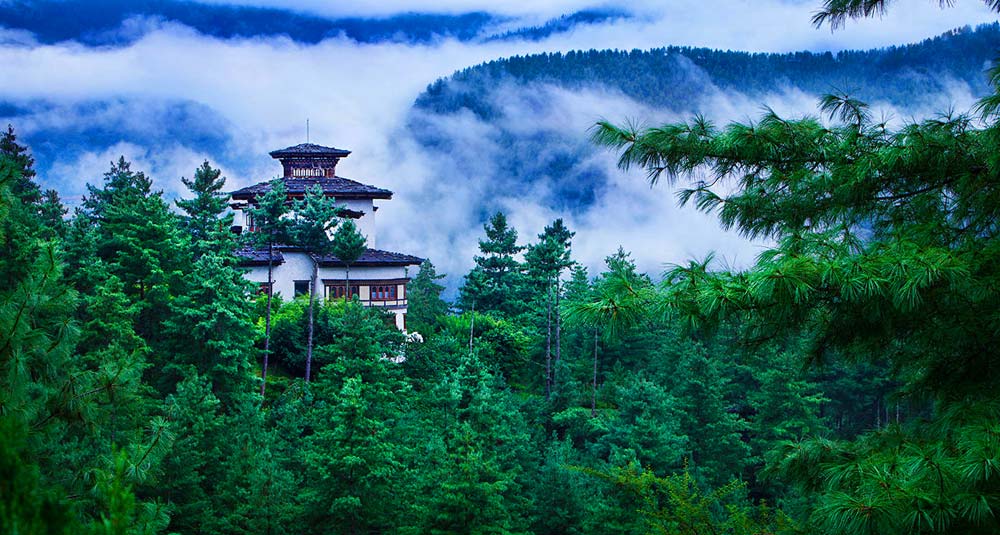
Situated in the valley of eastern Himalaya, Paro is a small and beautiful country in Himalayas with two storeys houses good looking, rectangular in plan decorated. It is bordered by Haa Dzongkha to the west, Tibet to the north, Thimpu to the east, and Chukha Dzongkha to the south. It is full of legends, heroism, and natural splendor and is home to some of the Bhutan's oldest temples, monasteries and the only airport of Bhutan. Rinpung Dzong built in 1646 by Shabdrung Ngwang Namgyal and Ta Dzong watch tower built to defend Rinpung Dzong during inter-valley wars of the 17th Century, now holds the National Museum is worth a visit. Taktshang, or Tiger's Nest, Kyichu Lhakhang the oldest temple, Drukgyel Dzong, at ruins since a fire in the 1950s. Rinpung Dzong where the movie Little Buddha was filmed are all beautiful sites to be visited around the town of Paro.
Punakha
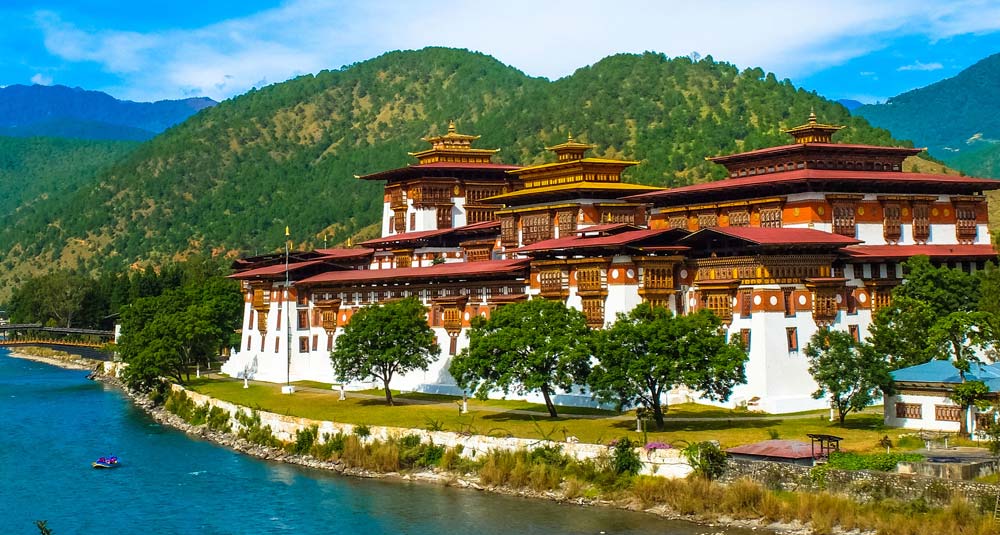
It is the administrative centre of Punakha Dzongkha, it is about 72 kilometers and it is about 3 hours drive by car from Thimphu situated at an elevation of 1200 meters with mountains covered with vast pine woods, winding roads and the snow covered peaks of the Himalayas. Punakha is bordered by Thimphu, Gasa, and Wangdue Phodrang all are of tourist interest. It's a picturesque town and the weather is quite warm in winter and hot in summer. Rice is grown as the as the major crop along the valleys of two rivers Pho Chu and Mo Chu. The village named Ritsha is famous for rice cultivation and the plantation area also has papaya and orange plants growing in between. Punakha dzong is beautifully located along the river but is vulnerable to flash flooding caused by glacial lake outburst flood and it was flooded thrice in 1957, 1960 and 1994. Few noticeable object is the is that you come across with prayer flags - some small square flags strung together and other single flags on a pole by themselves.
Samdrup Jongkhar
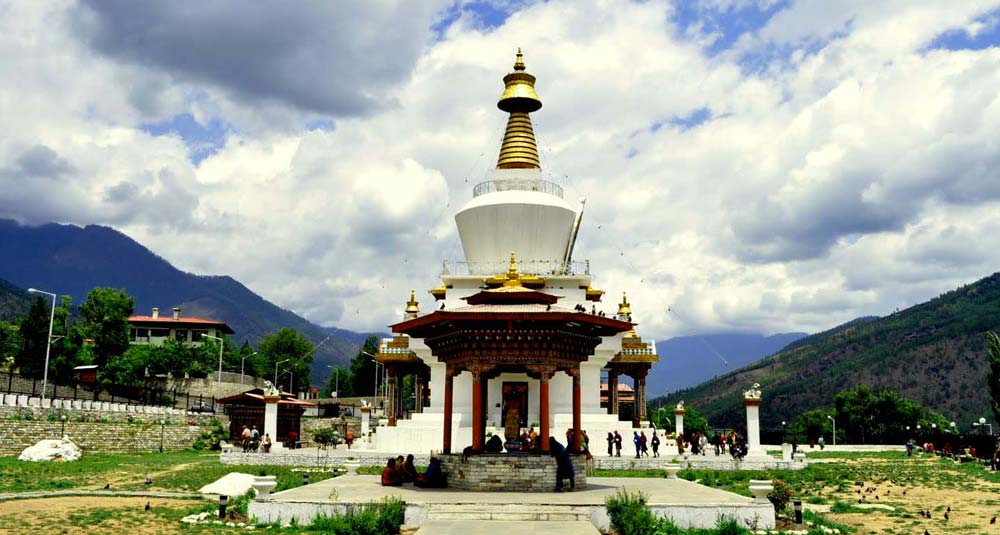
Samdrup Jongkhar is regional head of Samdrup Jongkhar district and the largest town in east Bhutan it is similar to Phuentsholing due to the similarity in architectural style. In fact both towns are on the border with India and are the only entry and exit point by road. This town is a very clean and pleasant place with an eclectic mixture of Bhutanese and Indian shops, restaurants and hotels, so it is worth a look around if visiting the area. Though this place does not have much places of tourist interest yet being an important transit point with the Visa office and entry point to Bhutan, it is always bit busy. Flight and roadways are the only option of travels in Bhutan and is always advisable for travelers to visit places nearby or in one circuit well planned in advance. Small Japanese Coaster buses makes comfortable journey from there.
Thimpu
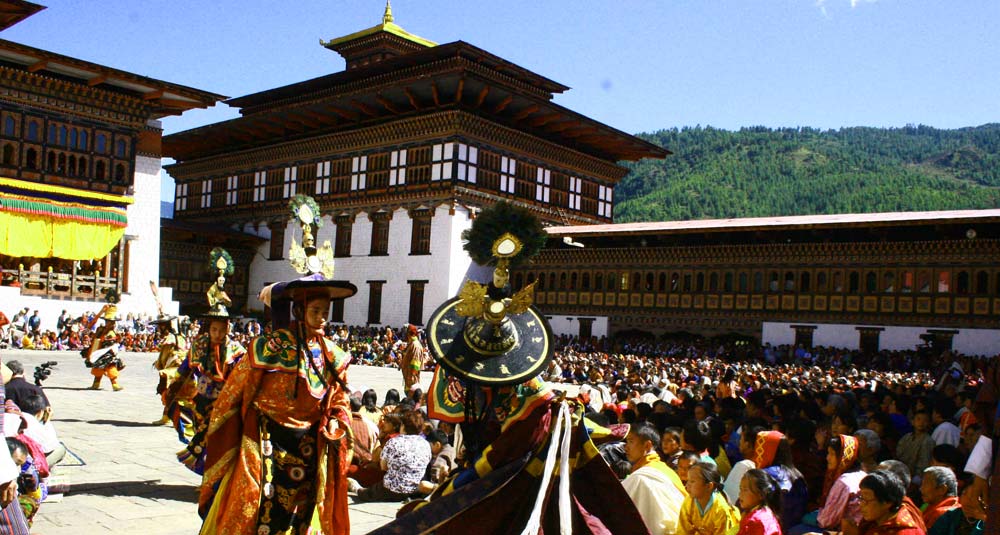
It is perhaps the smallest capital in the world and is pure and ethnic gallery of traditional Bhutanese art, architecture, culture, and tradition, located across the western slopes of the Wang Chhu river valley. This is the center of Bhutan and the financial and tourism hub situated at an altitude of 2,320 meters, even a walk through Norzin Lam the main thoroughfare is worth. It is perhaps the only world capital without any traffic lights. The places to visit in Thimpu is the Memorial Chorten, dedicated to the late King Jigme Dorji Wangchuk, Tashichho Dzong, the summer residence of the central monk body, the traditional medicine hospital where herbal medicines are prepared. The National Library, a treasure trove of ancient texts and the institute of Zorig Chosum for thanka painting, sculpture, wood and slate carving, gold works and embroidery.
Trongsa
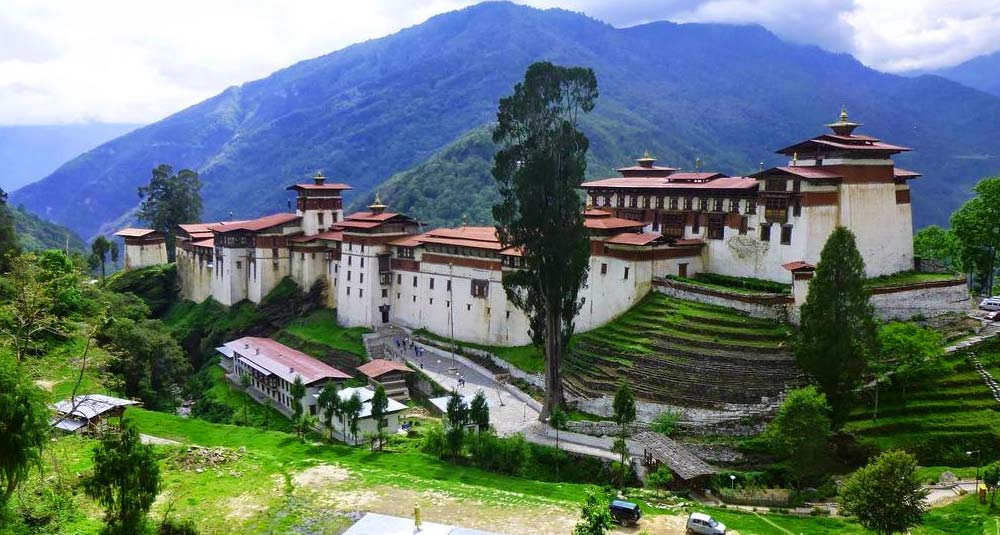
Located in the centre of Bhutan is of great importance in the history of Bhutan. His Majesty King Ugyen Wangchuck, who was elected the country's first hereditary monarch, and his successor, King Jigme Wangchuck, ruled the country from Trongsa's ancient dzong. The present King continued this tradition when he was appointed Trongsa Penlop in 1972 shortly before he ascended the throne of Bhutan. Trongsa Dzong is an awe-inspiring and impregnable fortress. It has a labyrinth of temples, corridors and offices holding court over the local community. Trongsa is one of the quaintest and most charming of all Bhutanese towns. Its vista is traditional in appearance with wooden slatted houses lining the side of the hill.
Bumthang
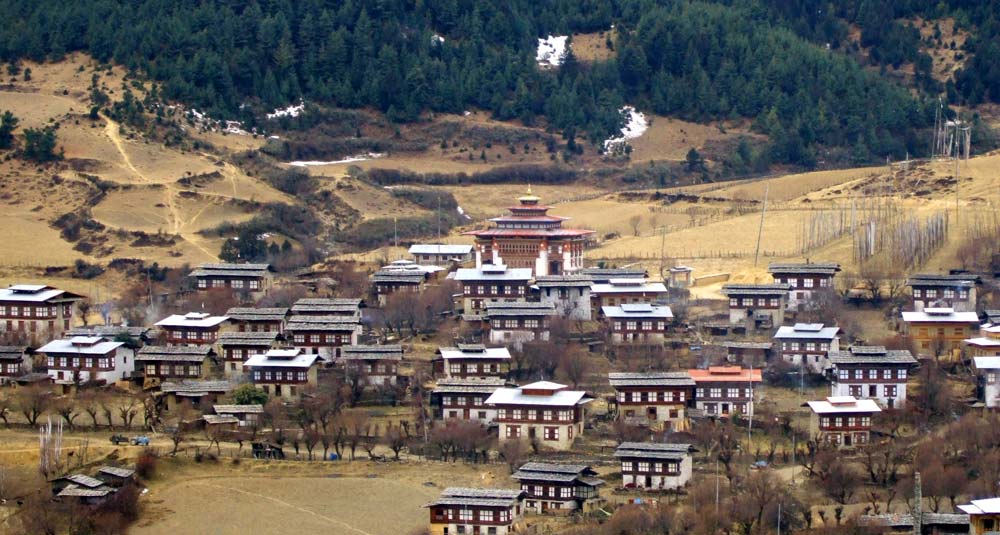
One of the site Jakar is in the middle of the four valleys of Bumthang covered in spruce and fir with avifauna like Chestnut breasted Partridge, Ward's Trogon, the majestic Rufous necked Hornbill, Blue napped Pitta, Blue fronted Robin, wedge billed, Bar winged Wren Babblers, Yellow rumped Honey guide, Emerald Dove, Large Niltava, and Russet Bush Warbler. One can also spot the rare Golden Langur. Here the landscape is dotted with palaces, ancient temples and monasteries. The drive from Punakha to Bumathang over the Do Chula Pass and Pelela Pass. On the way visit to Chume Valley, where local women weave the famous Bumathang Yathra from pure woolen cloth woven in the traditional method with beautiful colored patterns is worth visiting. Bumthang countryside are brilliant and one can enjoy the drive or trek whichever one opt for offers an exceptional opportunity to be in contact with the rural life.
Wangdue Phodrang
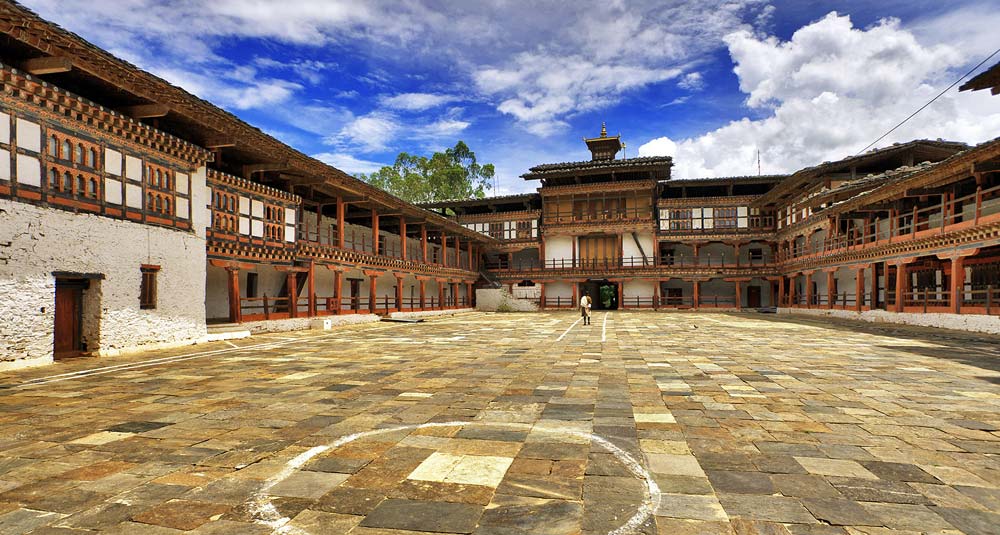
Wangdue Phodrang is a town and capital of Wangdue Phodrang District. Wangdue Phodrang is divided into 15 gewogs or counties and the name is derived from the Dzong built here in 1638Located in central Bhutan the district is bordered by Thimphu and Punakha Dzongkhag to the west, Dagana and Tsirang Dzongkhag to the south, Tongsa Dzongkhag to the east and Gasa Dzongkhag and a small section of border with Tibet to the north. Wangdue Phodrang Dzongkhag has three approach / exit route. The Lateral Road enters from the west at Dochu La Pass and continues east to Tongsa. Second road heads north to the dzong at Punakha and becomes the trail to Gasa. The third departs the Lateral Road near the Pele La pass traveling south to Gangteng monastery and the Phobjika valley where the rare Grus nigricollis or the black necked cranes can be spotted. Trongsa is one of the tourist hot spot in eastern Bhutan. Located in the centre of Bhutan is of great importance in the history of Bhutan.